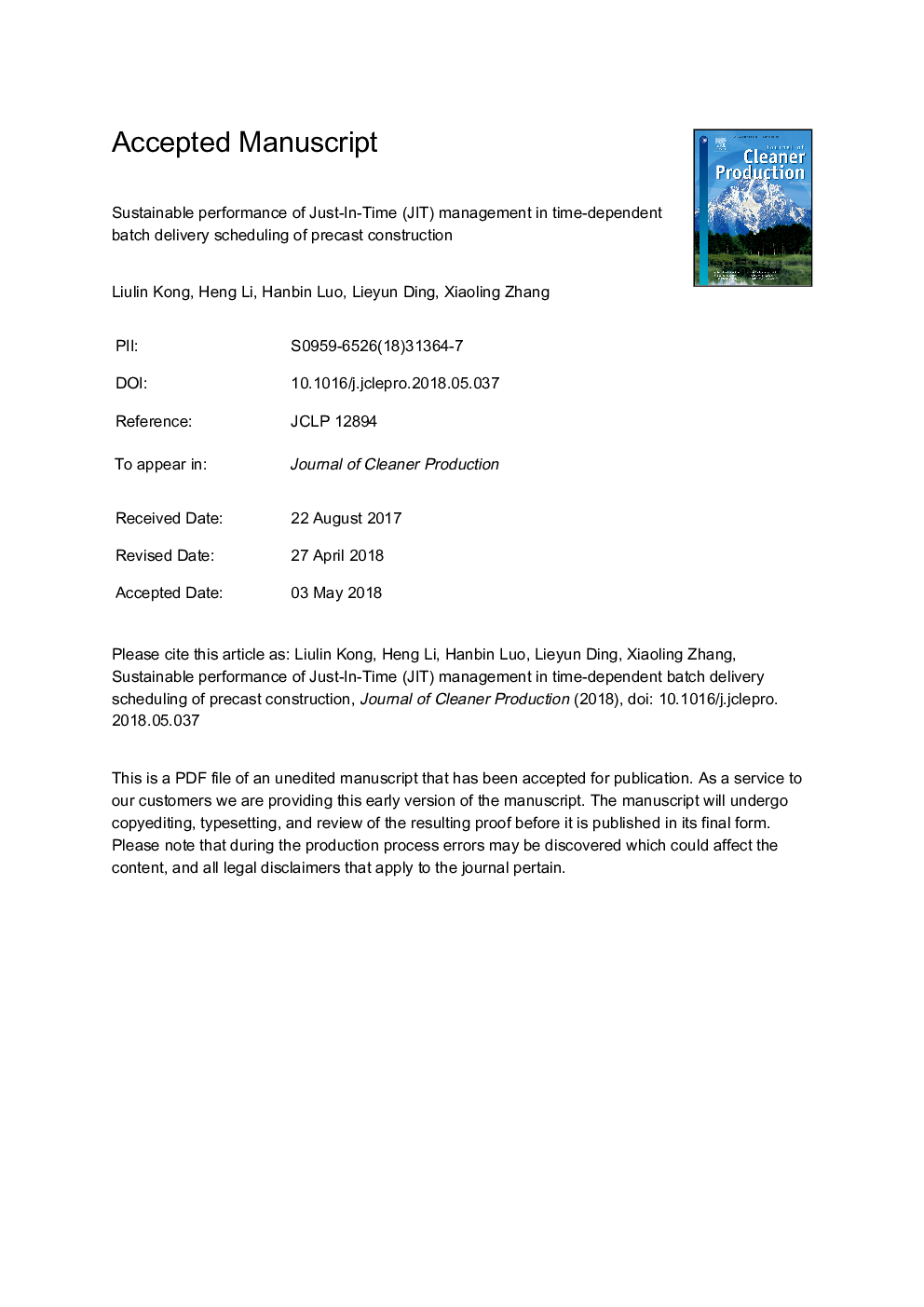| Article ID | Journal | Published Year | Pages | File Type |
|---|---|---|---|---|
| 8094636 | Journal of Cleaner Production | 2018 | 45 Pages |
Abstract
Despite a great deal of research into precast production scheduling published in academic journals worldwide, little attention has been given to environmental performance related to precast construction transportation and assembly scheduling problems. To address this issue, this paper studies the Just-in-Time (JIT) strategy for supply chain management of precast construction while considering time-dependent transportation time and on-site assembly time. There are two main contributions of our work. First, our analysis expands the current batch-scheduling model of minimizing earliness/tardiness penalties, by incorporating environmental impact considering the time-dependent transportation time and economic impact of resources wasted by waiting for on-site assembly. Second, we quantify the economic and environmental performance using our research objective, consisting of earliness/tardiness penalties, an additional transportation time penalty, and a resource waste penalty. The optimal results show that, compared with the supplier's intuitive minimax optimization with deliveries on the earliest due date, there is an average 10.7% reduction of the objective value of a one-day assembly task by our proposed method. The results also show that the objective of achieving additional environmental performance conflicts with that of obtaining economic performance. However, sensitivity analysis further shows it is not always true to consider only additional environmental performance for the suppliers to achieve 'green' value. For a sustainable business, the customer's service-JIT delivery should also be considered. Thus, when the policy makers assign importance weights to different objectives, they should fully consider both the economic and environmental impacts. The research contributes to batch delivery theory by expanding the approach to a time-dependent delivery model by considering both the economic and environmental effects. The method developed is of practical value for precast building projects to help in the successful implementation of sustainable development.
Keywords
Related Topics
Physical Sciences and Engineering
Energy
Renewable Energy, Sustainability and the Environment
Authors
Liulin Kong, Heng Li, Hanbin Luo, Lieyun Ding, Xiaoling Zhang,
